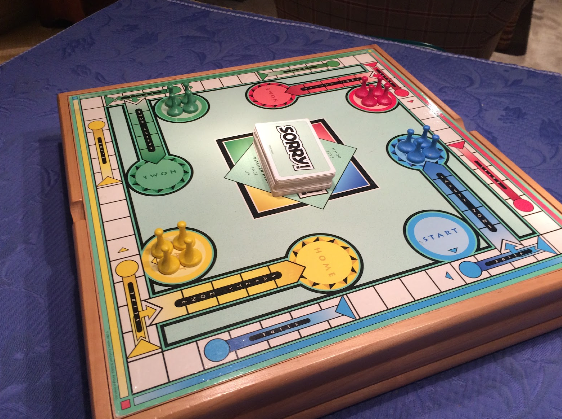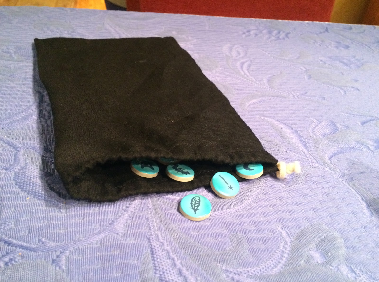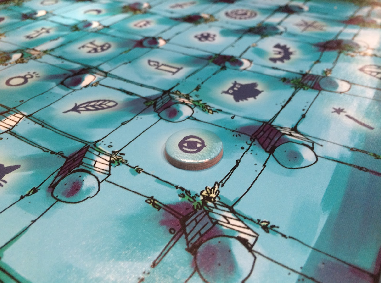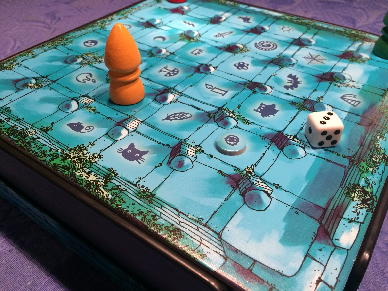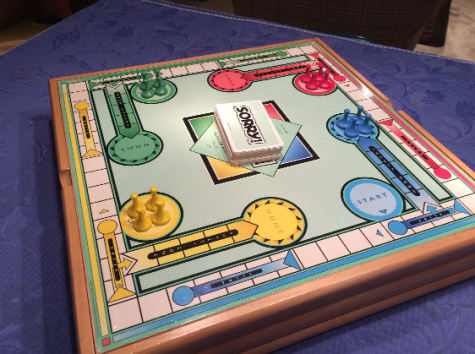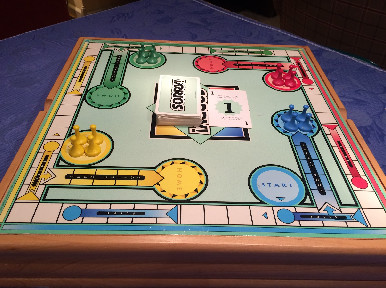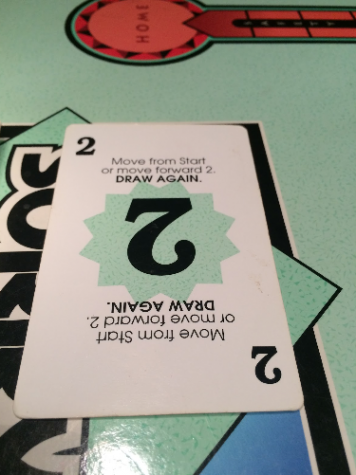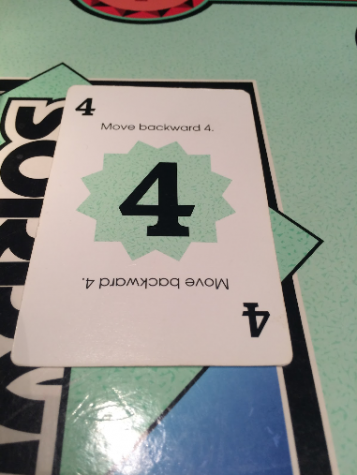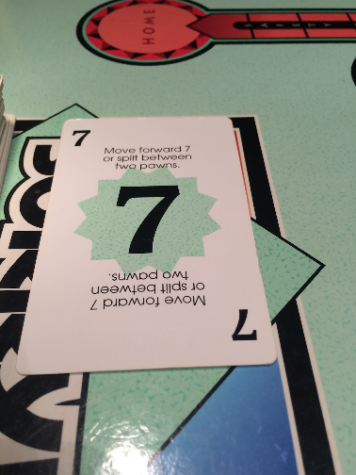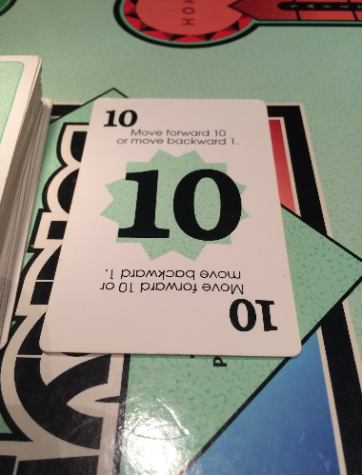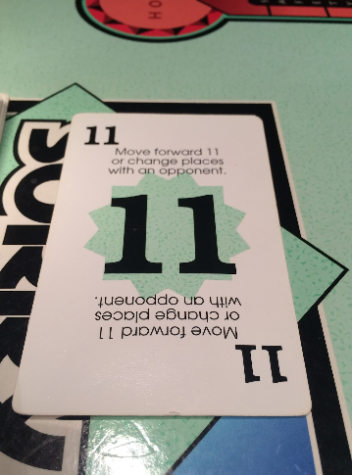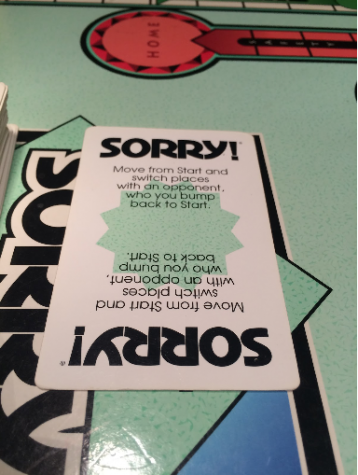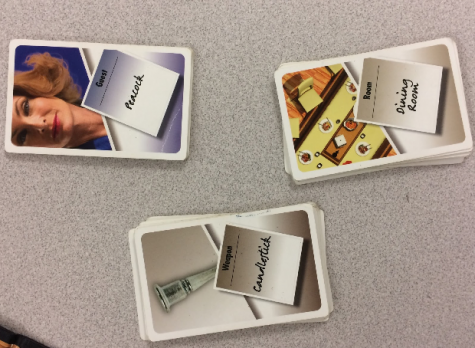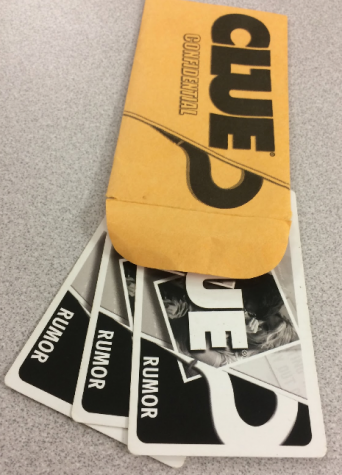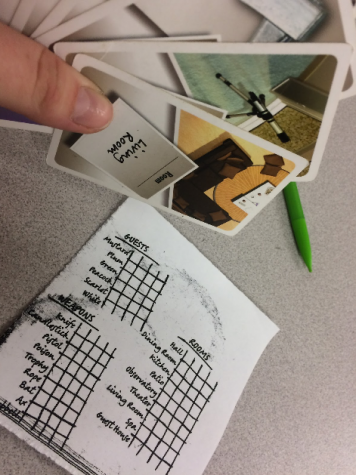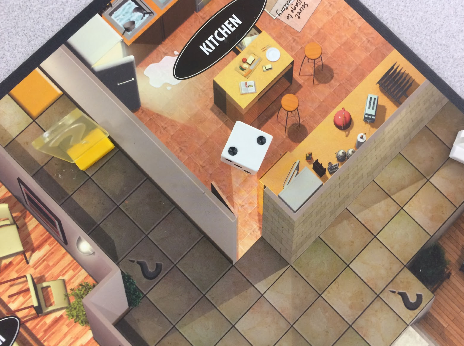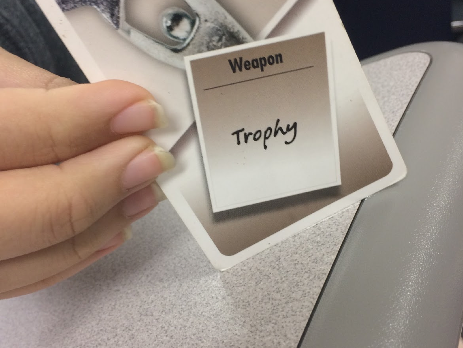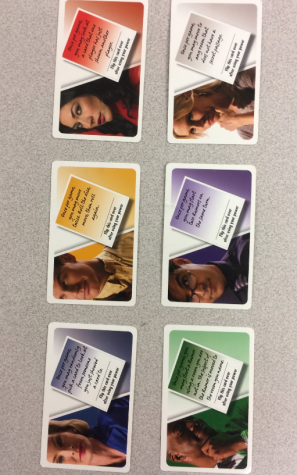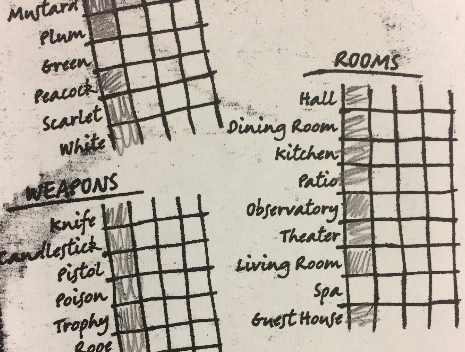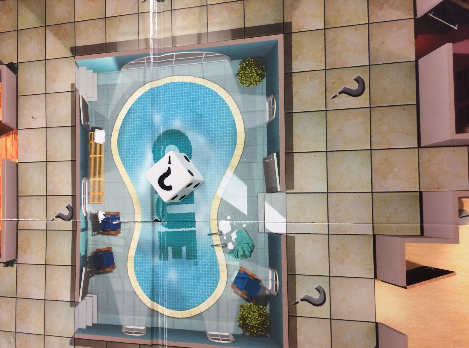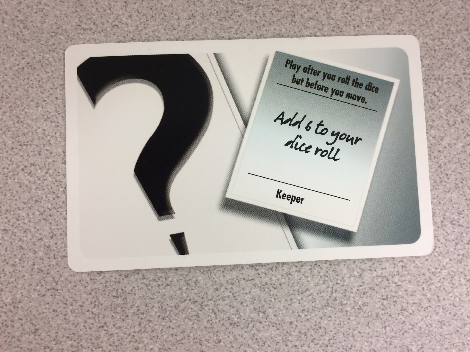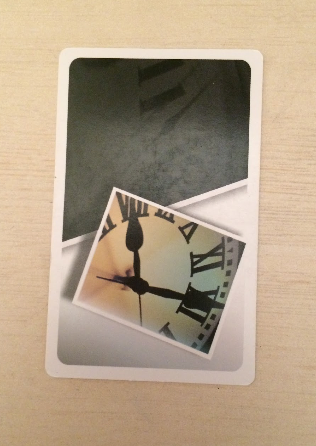Scarlet, In The Library, With The Candlestick
Have you ever been with a friend and not had anything to do? Here’s a few games that range from quick easy fun to more complicated longer entertainment.
The Magic Labyrinth
How to play:
Game pieces consist of a wooden piece with a magnet on the bottom and a magnetic ball. Each player puts the ball under the board and the magnet on top the board. The underside of the board has walls that the player cannot see.
Each player reaches into a bag and retrieves a little cardboard circle.
They then will match the picture on the cardboard circle to the corresponding picture on the game board.
Each player will roll a dice to see how many spaces they get to move, and they will try to reach their cardboard circle without running into a hidden wall. If a player does run into a wall, they must start back at their start point.
Number of players: two-to-four players.
Recommended age for play: ages 7 and up.
How to determine winner: The first player to collect five cardboard circles wins.
Rate: This is a kids game but all the same it is still fun to play. It’s a game that uses your memory and can test your patience. Labyrinth is a 4 out of 5 rate game, it is easy to pick up on and is entertaining, but can get a little boring after a while.
Sorry
How to play:
To play Sorry a deck of cards is placed in the middle of the board. Each player has four game pieces they are trying to move from start to their finish (home). Each player will draw a card and move as indicated on the card.
In order to leave your start position a player needs to draw a one or a two card, this applies to each of the players four game pieces.
If a player draws a two they can draw again.
If a player draws a four card they have to move backwards four spaces.
If a player draws they can either move seven spaces forward, or split their seven spaces between two of their game pieces.
If a player draws a 10 they can either move forward 10 spaces or move backwards one.
If a player draws 11 they can either move their pon forwards 11 spaces or change positions with their opponent.
If a player draws the Sorry card they can take one of their game pieces that is still in start and take the place of one of their opponents game piece, sending them back to start.
Number of players: two-to-four players.
Recommended age for play: Ages 6 and up.
How to determine winner: The first player to get all four of their game pieces to their home wins.
Rate: There is no skill to Sorry, it’s a game of chance and luck. This too is a child’s game, but sometimes it’s nice to play a game that you don’t really have to think a lot about. The great thing about Sorry is that it is a game players can get into. Sorry is a 3.5 out of 5 rate game, it is a extremely simple game and gives little challenge but is a nice break from complicated games.
Clue
How to play:
A dealer will deal out all the cards from each category; room, weapon and person.
After choosing one of each card to put in the card pouch. Each player will try to use their own observation and guessing skills to determine the cards in the pouch.
Each player will receive a paper that contains all the weapons, rooms and people; they will use this paper to help narrow down the possible cards that lie in the pouch. Each player will cross out the cards they have.
A player will roll the dice with the motive of getting their game piece into a room laid out on the board. Once a player makes it to a room they will be able to make a guess, the room they enter will be the room they make their guess with, ie: the person was Mr. Green, with the trophy as the weapon in the conservatory as the room. The character they guess ie: Mr. Green, would be moved to the room they were accused in. When a player roll the dice again, they can not re enter the room they were just in.
The player will announce the guess to everyone and if the person to their right has one of the cards they guessed, they have to show it to the original player who asked. If the player to their right does not have one of the cards they guessed then it moves on to the next person, and so on. When a player finds out that one of the cards they guessed is not in the pouch then they will cross it off their sheet. If they do not find this out, they can assume that card is in the pouch.
Depending on what game character you choose to be you get a special power. each character has a different power as stated on the card.
Peacock – “Once per game, you many randomly pick a card to look at from someone you just showed a card to.”
Mustard – “Once per game, you may move twice. Roll the dice, move, then roll again.”
Scarlet – “Once per game, you may look at a card that one player has just shown to another player.”
Green – “Once per game, you may start a rumor using a room you are not in. The suspect of the rumor is moved to the room you name.”
Plum – “Once per game, you may start two rumors on the same turn.”
White – “Once per game, you may move to any room that does not have a secret passage.”
Once a player has used their characters secret power, they must flip the card over.
When a player narrows their cards down to the point where they want to guess what the cards in the pouch are, they will go to the pool (center room) and tell their guess, They then will check the inside of the pouch and keep the cards identities to themselves if their prediction was wrong, and they can no longer play. If their prediction was correct, they will have won the game.
If a player rolls the die and this symbol shows up, it means they must draw from the intrigue card pile.
The intrigue card pile consists of cars that the player will keep until they use it. These cards are often cards that let the player have an extra power or add to their turn.
This is a clock card, there are eight clock cards in the intrigue pile, the player who draws the eighth clock card is kicked out of the game.
Number of players: two-to-six.
Recommended age for play: ages nine and up.
How to determine winner: The person the guess all the cards in the pouch correctly is the winner.
Rate: Clue is a game of strategy, observation and competition. It is great to play with friends and family, and makes each player really think. Clue can take a long time to play or a relatively short time to play. It’s a great game to play when you are hanging out with friends and you don’t have too much to do. Clue is a 5 out of 5 rate game, it’s not the most difficult game to figure out though it may take a round or two. This is a game that one can play many rounds of for long periods of time. It’s great for friends and family, and is fun for all ages.
If you want to learn more fun games, look up Play The Ace by Lany Borella on the TKC website.
Your donation will support the student journalists of Kirkwood High School. Your contribution will allow us to purchase equipment and cover our annual website hosting costs.
Grade: 10
Interests: Field hockey, Netflix, food
Favorite quote: "Well its no secret that the best thing about a secret is secretly telling someone your...


